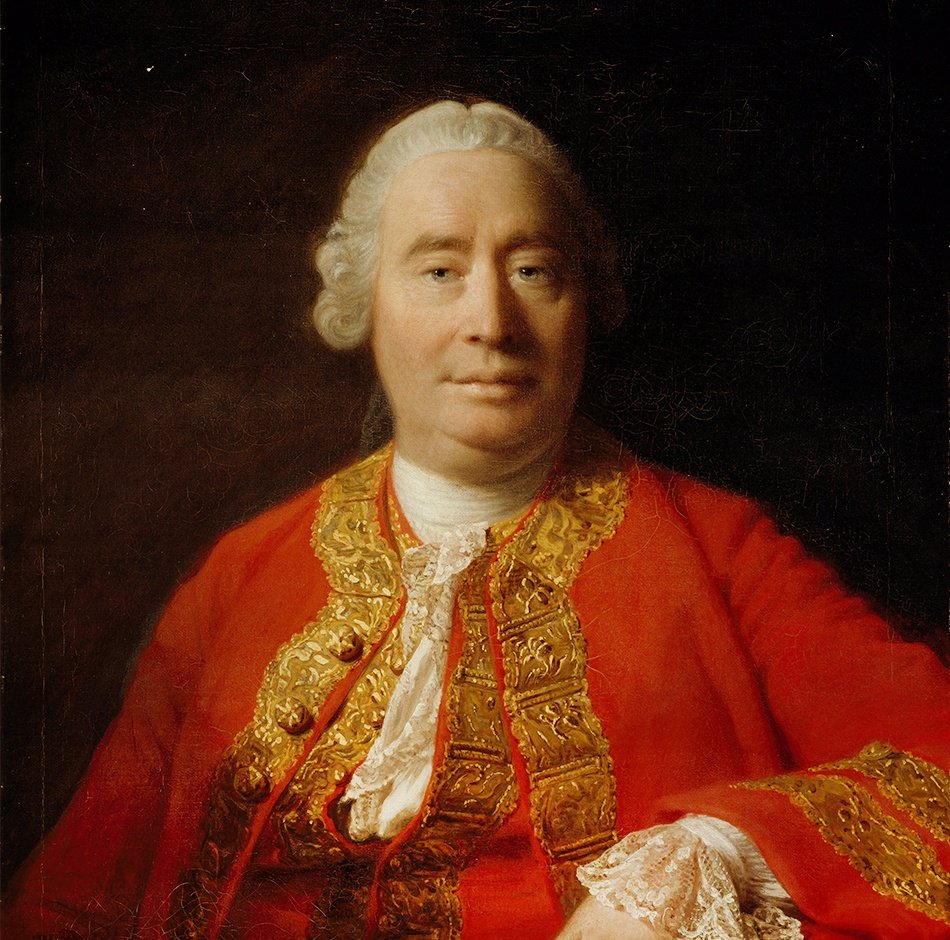
In 1751, David Hume (1711- 76), philosopher, historian and figurehead of the Scottish Enlightenment, settled in an apartment in Riddle’s Court, a sixteenth-century townhouse enclosed by a courtyard in Edinburgh’s Lawnmarket area. Later in his brief autobiography ‘My Own Life’, he recalls how ‘I removed from the Country to the Town; the true Scene for a man of Letters.’ At the time, he wrote to a friend: ‘I have now at last-being turned forty . . . arrived at the dignity of being a householder. About seven months ago I got a house of my own, and completed a regular family, consisting of a head, viz. myself, and two inferior members – a maid and a cat.’ Hume was already a figure of some notoriety in the city: controversy surrounding his sceptical and irreligious ideas had resulted in charges of heresy, and he had been denied academic positions at the Universities of Edinburgh and Glasgow.
His arrival coincided with a pivotal moment in the city’s architectural history. In a 1752 pamphlet, Edinburgh Town Council noted with concern how unsuited the steep closes and winding alleyways of the Old Town were to the demands of modern commerce. In an age of increasing British patriotism following the passing of the Act of Union of 1707 and the failure of two Jacobite uprisings, wealthy residents of Edinburgh looked over the border enviously at the spacious roads, squares and parks of London. At the same time, Hume’s own works on politics and economics, together with those of other luminaries of the Scottish Enlightenment such as Adam Smith, William Robertson and Adam Ferguson, encouraged the idea that human society might be improved through the development of free trade and the accumulation of knowledge. Sociability and progress became the watchwords of the eighteenth century Scottish Enlightenment.
These ideas would feed into James Craig’s winning 1767 plan for a New Town of Edinburgh, to be built on fields to the north of the badly polluted Nor Loch (this was later drained to create Princes Street Gardens). Craig’s plan epitomised Georgian enthusiasm for Neoclassical design and its confidence in the possibility of cultivating civilised virtues through architecture and town planning. In particular, the emphasis on convenience, symmetry, order and uniformity in Craig’s gridbased plan reflected Enlightenment optimism that social improvement could be engineered by the application of geometrical precision in the creation of public and private spaces. Compared to this new aesthetics of order and openness, the close, narrow passageways and disorienting staircases of secluded Old Town buildings like Riddle’s Court could appear, both literally and figuratively, backward looking. Inevitably, it was to the rational, sociable and affluent New Town that Hume retired in the 1770s, joining the exodus of Edinburgh’s social elite and leaving the cloistered antiquity of Riddle’s Court behind.


 Share on facebook
Share on facebook Tweet article
Tweet article